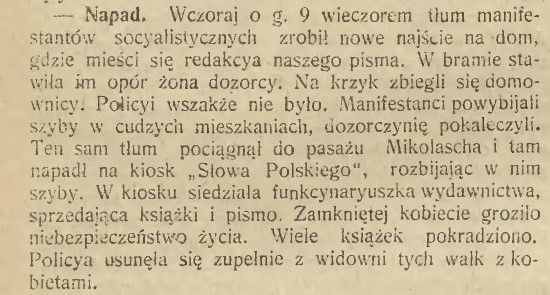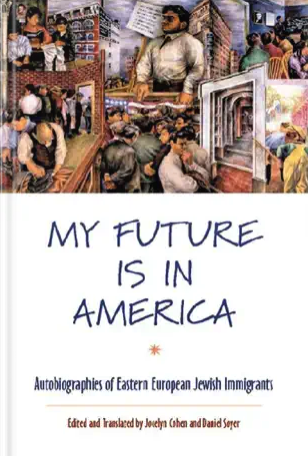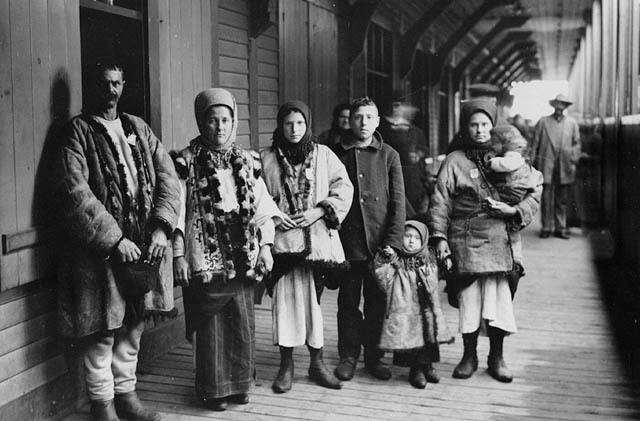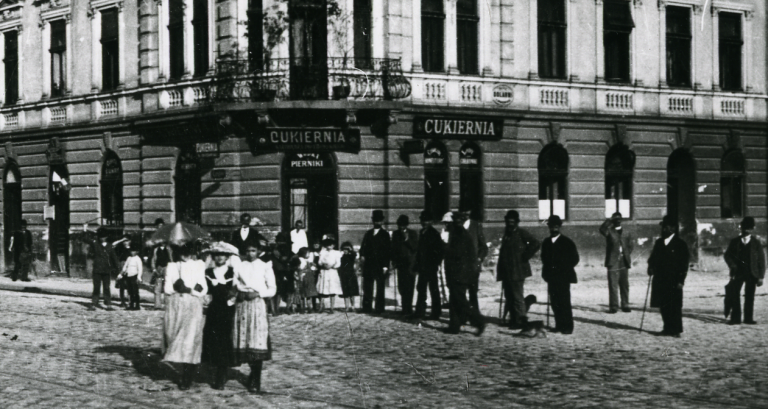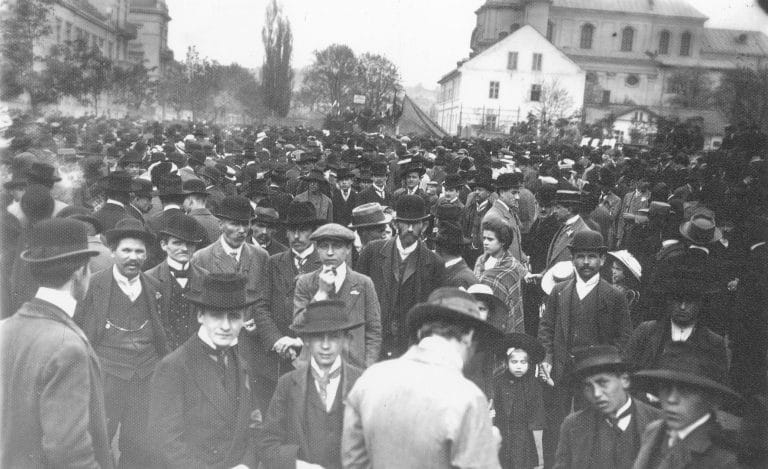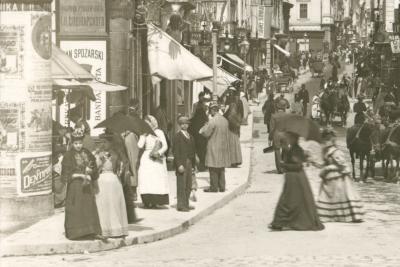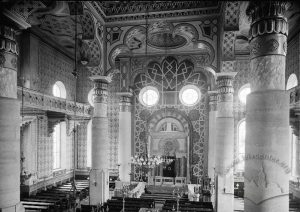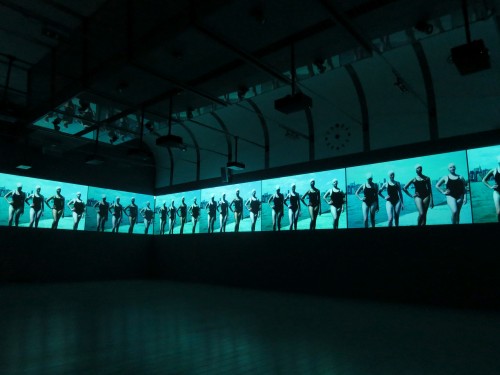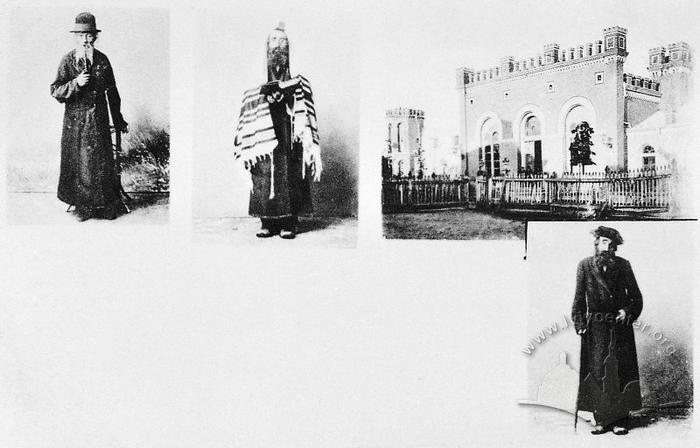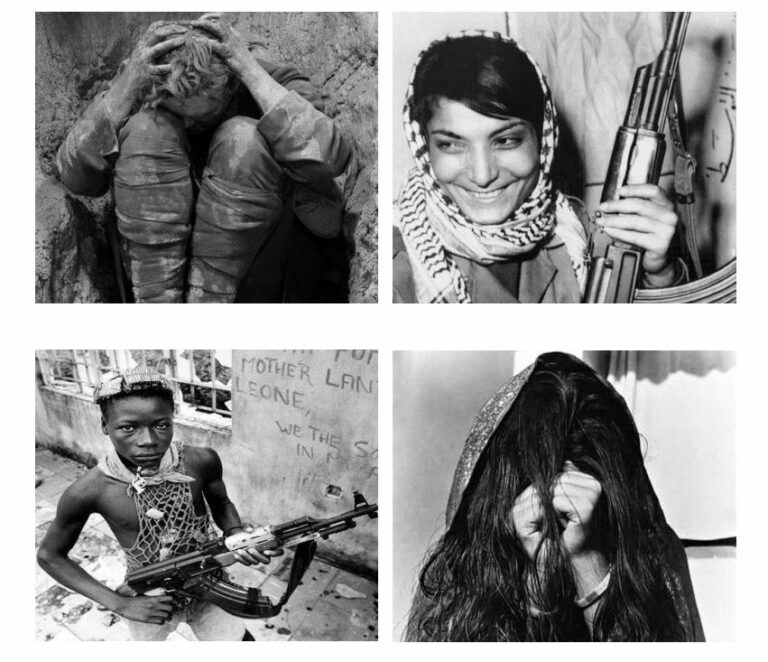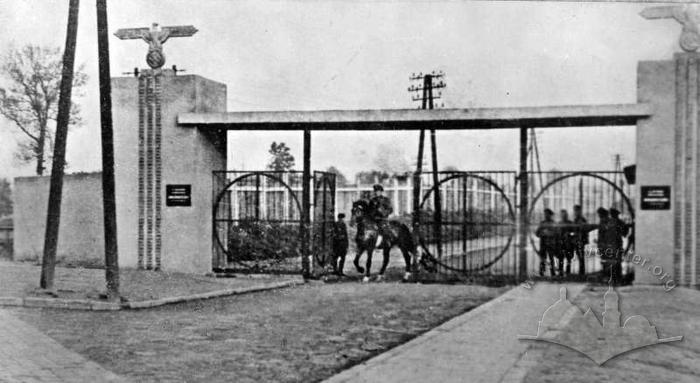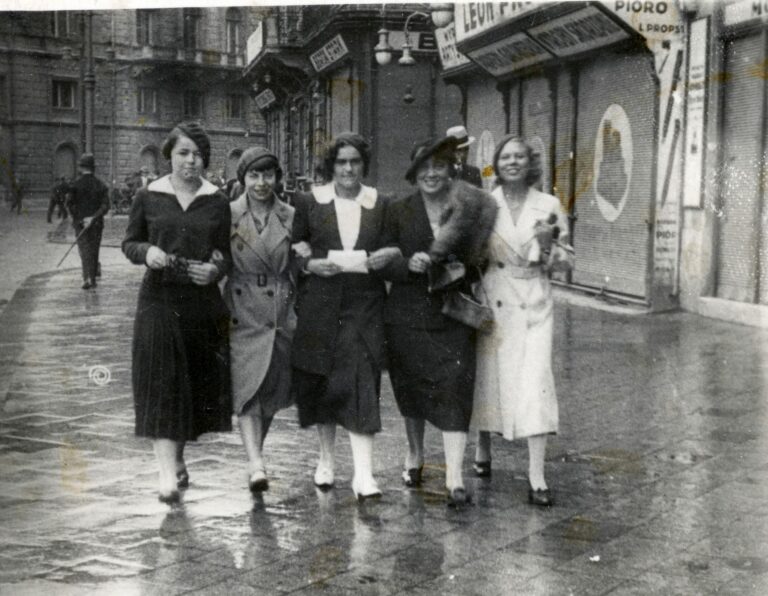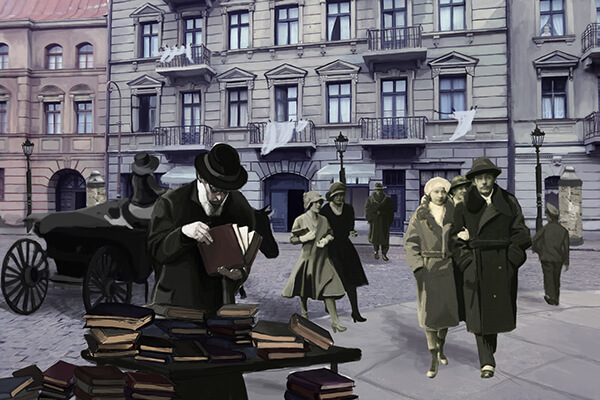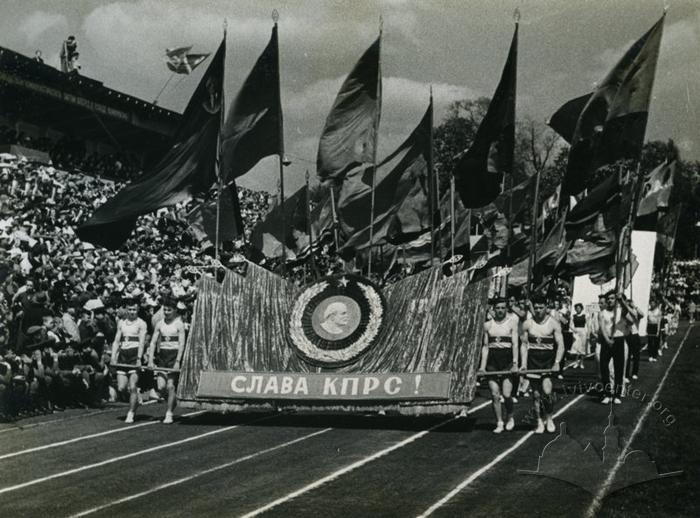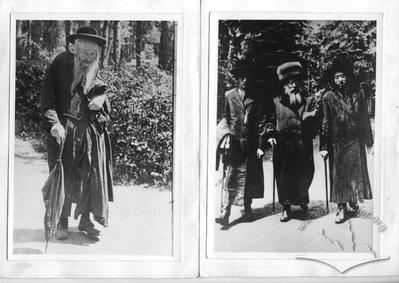1900s
Primary Sources
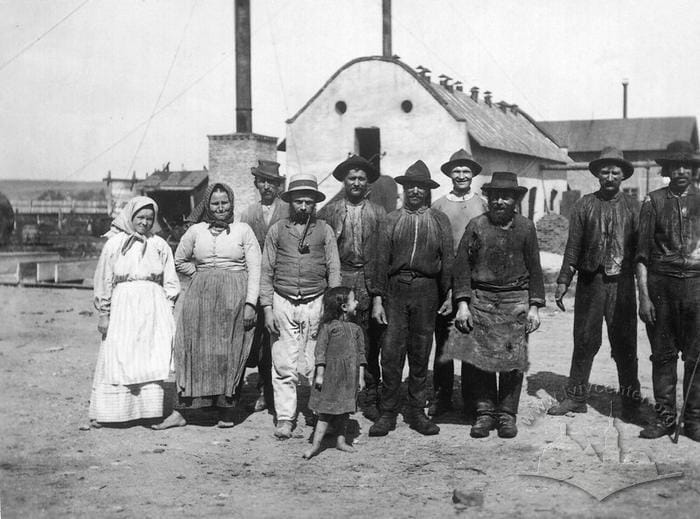
Voice of the Proletariat: Interethnic Relations in the Oil Industry of Boryslav in the late 19th and early 20th Centuries
At the end of the 19th and the beginning of the 20th centuries, oil workers in Boryslav formed a diverse and uneven group that included local Ukrainian peasants, Polish migrant workers from Western Galicia, Jews, and skilled workers from other countries. Some were seasonal labourers who came to work in the mines only when there was no field work in the villages where they permanently resided. Shared origins from the same locality or belonging to the same ethnic or religious group often took precedence over a sense of themselves as a professional group or class. In this respect, the industrial environment in Boryslav resembled the mining industry in new towns such as Yuzivka...
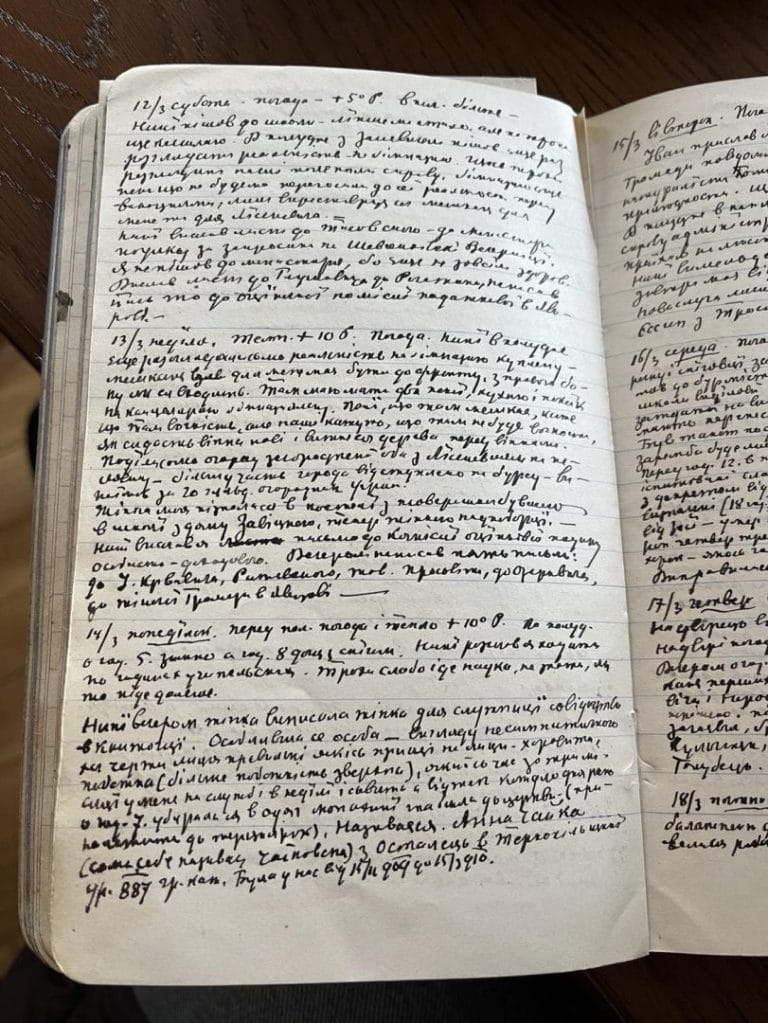
Maria Linchak: Handmaid’s Story from 1906-1909 Lviv
The 13 notes presented here are a compilation of all the diary entries by Teofil Hrushkevych, a retired Lviv gymnasium teacher, that mention a servant in his household named Maria Linchak (most often referred to as Marynka or Marynia). These references span more than three years, from 1906 to the autumn of 1909, marking the period during which she worked for the Hrushkevych family. Among all the notes the author made about the servants in his household, Maria Linchak is the most frequently mentioned. Alongside her name, we find at least nine other women who worked for the Hrushkevychs before or after Maria, up until the outbreak of World War I. With the...
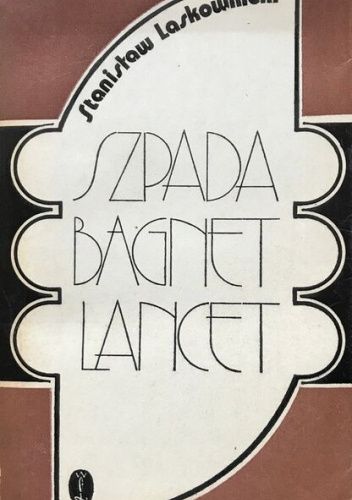
Stanisław Laskownicki on the Work of Lviv Journalists and Publishers at the Turn of the 19th and 20th Centuries
Stanisław Laskownicki (1892-1978), the first Polish professor of urology, stands out as one of the most intriguing memoirists chronicling Lviv. Born into a family of esteemed Lviv journalists, he possessed an extensive knowledge of the city’s notable figures and the inner workings of various editorial offices. Additionally, with a diverse range of interests, he offered insights into the leisure activities of Lviv’s youth, including sports, duels, and academic pursuits. His memoirs, titled Szpada, bagnet, lancet were published in two editions in 1970 and 1979. The excerpts provided here illuminate Lviv’s daily newspapers, recount typical anecdotes from the lives of journalists and their friends and shed light on the founding and evolution of the...
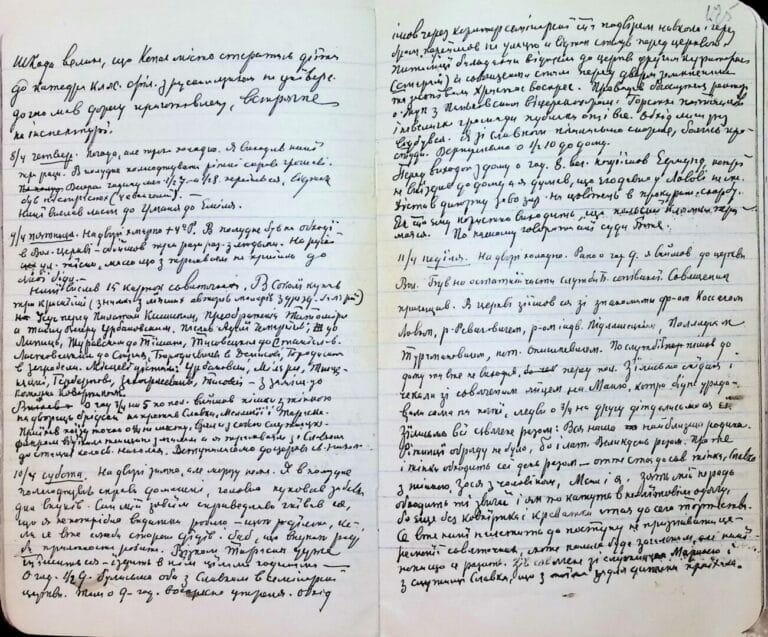
Christmas and Easter in Lemberg in 1908: The Case of One Multidenominational Family
Teofil Hrushkevych a teacher of classical languages at the Second (German) Gymnasium in Lviv, commenced his diary in 1895, though it was only after his retirement in 1906 that his entries became regular. The extant handwritten diary comprises eight notebooks, documenting entries for 1895, 1903, and 1906 (intermittent), and for 1908-1915 (almost daily). Typically, the author penned his notes in the evening, commencing with a depiction of the weather, followed by an account of the day's events: personal matters, such as receiving a pension, settling bills, visiting friends or acquaintances, attending church services, and social engagements, such as participating in meetings of Ukrainian societies to which he belonged, attending the theatre or a...
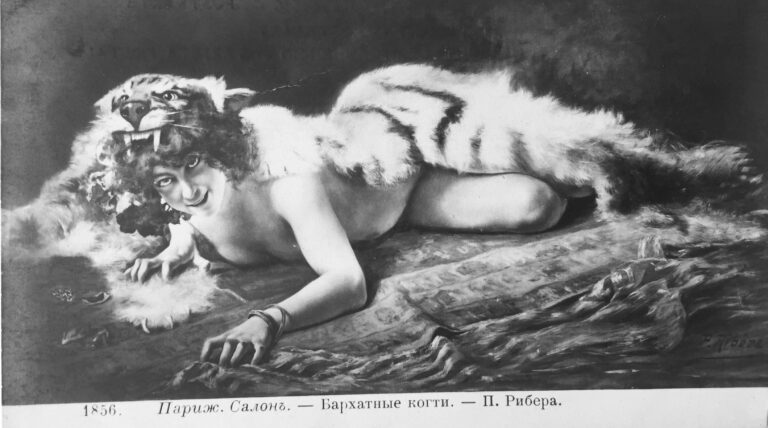
The pornography trade in Kyiv in the early 1900s
This source comprises correspondence between branches of the tsarist bureaucracy on the issue of the pornography trade in Kyiv at the beginning of the twentieth century. The sale of visual and textual materials deemed to be ‘obscene’ (nepristoinyi) and ‘immoral’ (beznravstvennyi) deeply concerned the tsarist authorities and was broadly regarded as a negative consequence of modernisation. The tsarist authorities were not alone in their concern about the increasing availability of ‘obscene’ materials in this period. Across the European continent, innovations in photographic technology, falling costs of printing and distribution, and the development of postal systems generated an explosion in pornography in old and new media in the late nineteenth and early twentieth centuries....

Excerpt from Lesia Ukrainka’s letter to Mykhailo Kryvyniuk about “brotherly peoples,” 1903
In a letter to her friend and ideological associate, Mykhailo Kryvyniuk—a member of the Ukrainian Social Democratic Party and a forced emigrant from the Russian Empire who had settled in Lviv—writer Lesia Ukrainka shares her impressions of the publishing debates unfolding within Russian liberal circles at the time. These discussions centered on non-Russian languages and the language policies of Russian “oppositionists” in the early twentieth century.
Show more
Collapse all

“Jewish Grandmother”, photo by Lewis Hine
Lewis Hine (1874-1940) was an American photographer who tried to draw attention to social issues such as migration or child labor. He took two series of photos on Ellis Island, an island near New York City that was the first stop and gateway for new arrivals. Photos of Lewis Hine are trying to show the identity of migrants, who were often exoticized and othered in the American press. The Jewish woman in the photo is dressed in clothes that do not distinguish her from other migrants from Eastern Europe. However, although Jewish migration was often also motivated by economic motives, in the public discourse and historiography of the early twentieth century, it was...
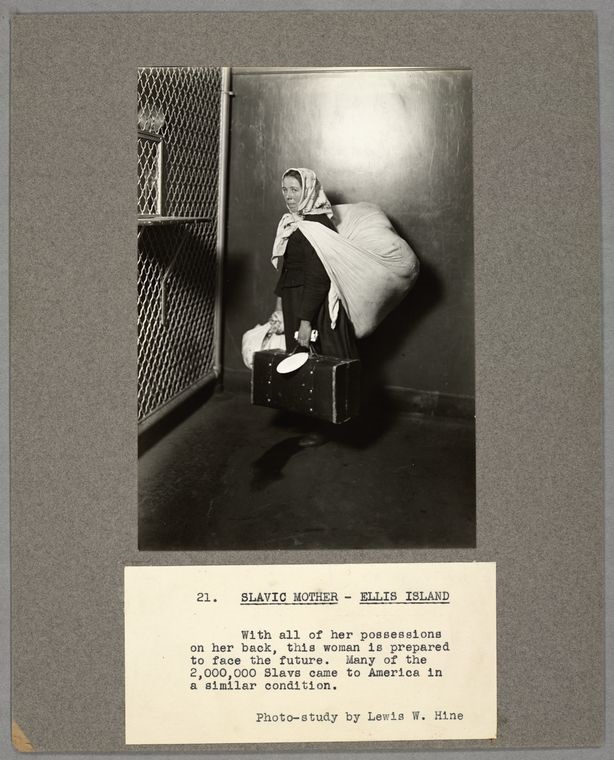
“Slavic Mother”, photo by Lewis Hine
Lewis Hine (1874-1940) was an American photographer who tried to draw attention to social issues such as migration or child labor. He took two series of photos on Ellis Island, an island near New York City that was the first stop and gateway for new arrivals. Photos of Lewis Hine are trying to show the identity of migrants, who were often exoticized and othered in the American press. The name of the photo "Slavic Mother" shows that Eastern Europe for Americans was still a space, which differences and nuances they hardly noticed. Hine perceives the woman in the photo as a person who left Europe forever, taking along all her posessions, and having...
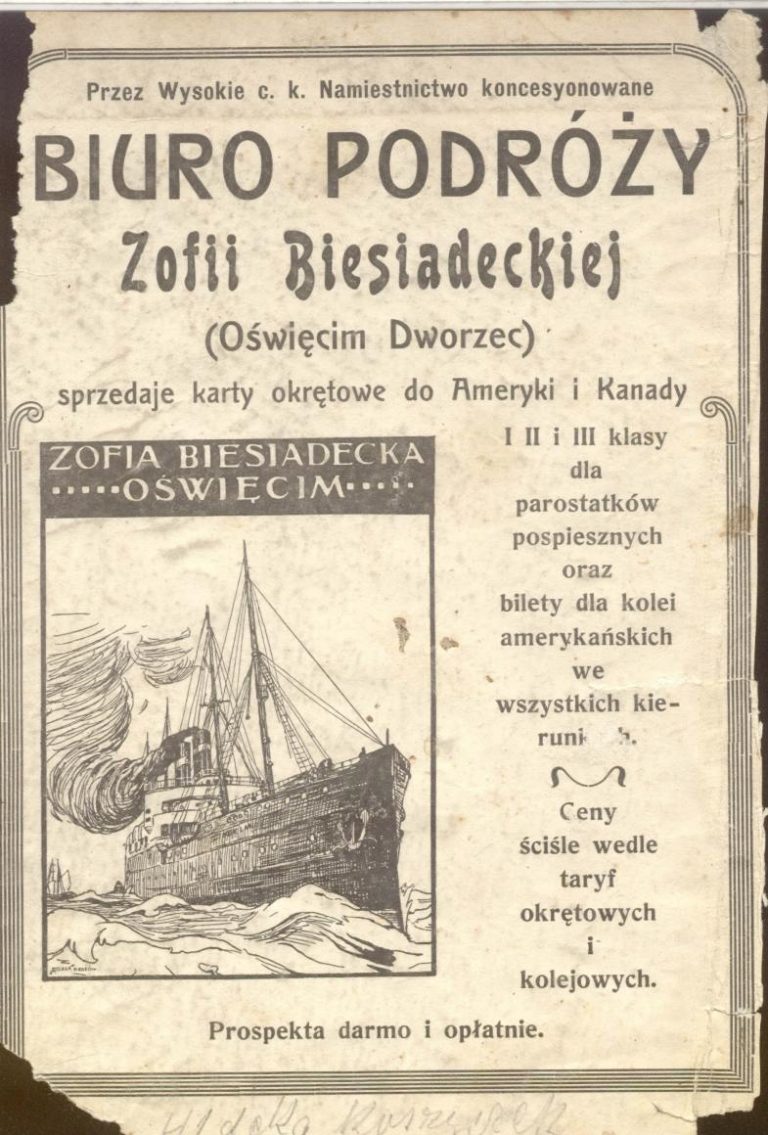
Advertising leaflet of Zofia Biesiadetska’s bureau
Zofia Biesiadetska's office in Oswiecim in Western Galicia was organizing transportation to America. The promotional leaflet offers tickets for steamboats to America and Canada. The transport revolution in the 19th century proved to be one of the most important factors that enabled mass intercontinental migration. Transport was relatively convenient and fast, as well as relatively inexpensive. With the beginning of mass migration, networks of agents developed, like Zofia Biesiedetska's bureau, who helped with the organization of the trip. This facilitated the migration of people from villages or small towns. At the same time, agents were often accused of lack of integrity and profiteering on migrants. Biesiadetska Bureau was one of the most respectable...

A brivele der mamen (A Little Letter to Mama), song about emigration, 1907
The song was written by a Belarusian composer and singer, Solomon Smulewitz (1868-1943) in 1907. The author also had experience of migration to the United States. The song became very popular. In particular, it was used as a basis for a theatrical production and a film in Yiddish. The work raises the issue of migration caused separation of families. While the son who went to America has a successful life and a new family, his mother feels abandoned. Before her death, she asks her son not to forget to read Kaddish, a memorial prayer for her. The problem of separated families remained common to all migrants, but in this text the Jewish prayer...
The end of the 19th century through the beginning of the 20th century is known as the period of mass migration from Europe to other continents, when more than 55 million people changed their place of residence. In particular, this process captured the Russian and Austro-Hungarian empires, where a difficult economic situation, job shortages, and persecutions stirred various groups of the population to leave. Such groups included both Ukrainian and Polish peasants, and Jews from urban centers who were small-scale craftsmen or workers. Most often, they moved to the United States, Canada, Argentina, and Brazil, where labor was needed at factories or farms.
In the 19th century, the gender pact dividing public and private spheres, as man-owned and women-inhabited, found its most solid reasoning. In this vision, the city as the most obvious embodiment of public life, seemed to be male by default. Women in the city were taken as potentially threatened. This was evidenced by a number of prohibitions, which could include not only certain places inaccessible to women, such as universities in Lviv until the late 1890s, but also ordinary everyday experiences that they could claim only at the cost of their own reputation. In this module, historian Ivanna Cherchovych will try to look at the city from its women's experiences.
The "The City as a Stage: When Politics Takes to the Streets" project focuses on mass events in the public space of Lviv during the Habsburg period, which took place in the open air – on the streets and squares of the city. As the political center of Galicia, the "royal capital city" of Lviv was simultaneously considered the "capital of the freest part of Poland" and the "capital of Prince Lev." Political and national confrontations were concentrated here. Although the population of Lviv at that time consisted mainly of Poles and Jews, followed by Ukrainians, it was the competition between Ukrainians and Poles that was most significant. These two groups declared their...
The three stories presented in this text are dedicated to three different women united by one city. Sharing a common urban space, they experienced it in different ways, given their different social positions, status and starting opportunities. The time in which they had to live their lives was in one way or another reflected in microstories from the life of each of these women. The first story is dedicated to Maria Hrushkevych, a long-time employee of the Lviv post office, who was among the "first" women employed by the state. In the second, Maria Linchak will be talked about, who was a maid in the house of Teofil and Liudmyla Hrushkevych, a chorister...
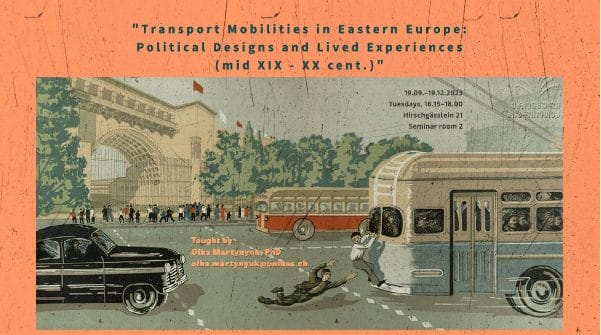 Transport Mobility in Eastern Europe: Political Designs and Lived Experiences (mid XIX – XX Century)
Transport Mobility in Eastern Europe: Political Designs and Lived Experiences (mid XIX – XX Century)
The course invites to explore East-European History of mid XIX - late XX cent. through the concept of mobility, which encompasses movement of people, goods and ideas. Students will deal with a corpus of texts on social history of transportation, as well as with a rich array of visual materials. Of special interest will be cases, specific to the region, for example cultures of Christian and Muslim pilgrimage, Socialist rallies, trolleybus infrastructures or “destalinization” of metro stations. Cases of imported western technologies will provide ground for interregional comparisons, not only in aspects of introduction of transport system, but also in aspects of their exploitation and disintegration. The course is built on a premise...
East-Central Europe played a vital role in the global history of mass migration and experienced an enormous variety of mobility processes in the long 19th and short 20th centuries. For instance, mass emigration from the Russian and Austro-Hungarian Empires and the Soviet Union, human trafficking, labor migration, forced migration during WWI and WWII, refugee crises and asylum, travel, and professional mobility. The voluminous scholarship on this chapter of migration history has lots of gaps and, notably, is almost absent from history curricula. This introductory course broadens our lens to examine the role of migration and mobility for the places where it occurred as well as the experiences of migrants, displaced persons, refugees, and...
The course explores the history of Russia as an empire from Peter I up to now in the methodological perspective of the new imperial history. What are the historical preconditions and sources of Russian imperialism and militarism? How did the small principality of North-Eastern Europe manage to create the largest empire in the world? To what extent the Russian Empire of the 18th and 19th centuries differed from European colonial empires as well as eastern imperial polities such as Ottoman Empire and China? How did the imperial nationalities policies emerge and evolve? What role did the competition between "great powers" play in turning Russia into an empire? The course attempts to answer these...
The field of social history has achieved the edge of its popularity in 1950-1980s. It was strongly connected with other disciplines, such as economics, demography, sociology, and allowed historians to reach a much wider range of research themes. Since the 1960s, the social history of the Jewish people became important and influential part of the studies. Historians were exploring the possibilities to study Jewish community with new tools and integrating different representatives of Jewish community – workers, women, immigrants, criminals - in a research. Since 1990s historians of Jewish past shifted their interest to cultural studies. However, in the last years, we can see an economic turn, which signifies the search for a...
The aim of the course is to get to know how to analyze examples of visual culture, including: fiction films and documentaries, video, photography. Both contemporary and historical materials will be studied, together with theoretical texts and publications (from the area of film and media studies, anthropology, cultural studies and history. Although images are mostly seen, if you want to really know them and understand them really well, you must not only "see" them but also "read" them, that means to analyze them as a complex message/ text. That is why at our course we will firstly discuss some terms and categories, that would help us to read images such as: composition, convention,...
This course forms a part of Jewish History and Culture of East Central Europe in the 19th-20th Centuries summer school. The syllabus is availible only in Polish.
This course was a part of Jewish History and Culture of East Central Europe in the 19th-20th Centuries summer school. The syllabus is written in Polish.
The course aims to discuss the major military conflicts of the twentieth century from a gender perspective. In doing so, the course covers the history of global and local wars in a wide variety of regions, including Europe, Africa, and Asia. However, rather than surveying a vast number of military conflicts, we will use a case study approach to conduct in-depth analyses of external and internal dynamics of military encounters and the role of gendered violence during them.
In our mini-course we will explore cultural interaction between Jews and non-Jews (Ukrainians, Poles, Russians) in the borderlands of the Habsburg and Romanov empires. This is interaction that may have been conscious or unconscious, and may have involved encounter, appropriation, negotiation, exchange and destruction.
The course intends to show the possibilities afforded by applying the gender (cultural sex) perspective in the study of Jewish culture. Proceeding from the analysis of the role of the woman and man in traditional Jewish society, we will present gender difference in the process of modernization among Jewish women and men. In looking at autobiographical materials, we will trace characteristic stages and stories, as well as life’s choices of Jewish maskilim (advocates of Haskalah, the Jewish Enlightenment). We will use the examples of the life and work of Pua Rakowska (known as "the Grandmother of Zionism") and Sara Szenirer (reformer of the traditional education system of Jewish girls) to analyze the problem...
This short course looks at Jewish history in the context of two multinational empires: the Russian and the Habsburg. Both of these states must be understood as fundamentally pre-modern, non-national (even anti-national) political structures, a fact that is crucial for understanding Jewish history here. In the mid-19th century, the great majority of world Jewry made its home in this region and even at the end of the First World War, after the great wave of emigration to the Americas, western Europe, Erets Israel / Palestine, and South Africa, the Jewish presence here was considerable. In 1918 even antisemites could hardly imagine a Warsaw, Wilno, Lwów, Odesa (etc.) without Jews.
Our main focus in this class will consist in Jewish experiences with cities in the twentieth century. Geographically, our center of attention will be Central and Eastern Europe (with our main – but not exclusive – emphasis on territories that, at one point or the other, came under Soviet rule); chronologically, we will concentrate (unevenly) on the period between the end of the First World War and the end of the Soviet Union. In particular, the Holocaust and the Second World War were events of central and terrible importance for this period and area. Accordingly, we will pay special attention to them.
Ukraine’s twentieth century was tragically marked by much politically motivated violence and authoritarian regimes as well as movements, from the radical left and the radical right. These forces and events did not only do great harm in the past but left memories and legacies that are still challenging to contemporary Ukraine. In this class, we will focus on several key issues of history, memory, and politics. The readings cannot be exhaustive. Instead, our aim is to read and discuss a sample of important short texts that allow us to reflect more broadly on the underlying questions.
This course was a part of Jewish History, Multiethnic Past, and Common Heritage: Urban Experience in Eastern Europe summer school (July 13 – August 7, 2015. Center for Urban History. Lviv, Ukraine).
This course was a part of Jewish History, Multiethnic Past, and Common Heritage: Urban Experience in Eastern Europe summer school.
This course forms a part of Jewish History, Multiethnic Past, and Common Heritage: Urban Experience in Eastern Europe summer school. The syllabus is available only in Polish.
This course forms a part of Jewish History, Multiethnic Past, and Common Heritage: Urban Experience in Eastern Europe summer school.
The course will cover the major development of the East European Jewry from the mid-eighteenth century till the present. More specifically, it will focus on the apparently largest category of modern Jewish history, i.e. modernity itself. The course will start with the discussion of what modernity means in contemporary scholarly discourse, and—more specifically—how it is applied today in historiography of East European Jewry. This introduction will provide a frame for the focus of the course: the analysis of the changing life patters and differing strategies of adopting, rejecting, or negotiating modernity in every-day lives of East European Jews.

